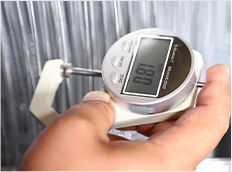evaporative cooling pads poultry house
Sep . 08, 2024 18:30 Back to list
evaporative cooling pads poultry house
Evaporative Cooling Pads for Poultry Houses An Essential Investment for Optimal Livestock Welfare
In modern poultry farming, maintaining the right environment for birds is crucial for their growth, health, and productivity. High temperatures can lead to heat stress, which negatively impacts the well-being of poultry and, ultimately, the farmer's bottom line. One effective solution that has gained popularity in poultry houses is the use of evaporative cooling pads. These pads are key components in creating a comfortable habitat for poultry, especially during the sweltering summer months.
Evaporative cooling pads operate on a simple yet effective principle. When warm, dry air passes through wet pads, the water evaporates, resulting in cooler, moister air that circulates throughout the poultry house. This process lowers the ambient temperature, creating a more favorable environment for birds. The benefits are manifold improved feed conversion rates, enhanced weight gain, and higher overall production. Birds raised in a comfortable environment tend to be healthier, reducing the risk of diseases and the need for medical interventions.
One of the primary advantages of evaporative cooling pads is their efficiency. They consume less energy compared to traditional refrigeration systems, which significantly reduces operational costs. Additionally, they require minimal maintenance, making them a practical choice for poultry farmers looking to invest in sustainable practices. By keeping the temperature in the ideal range, farmers can also prolong the productivity of their flocks, leading to better economic returns over time.
evaporative cooling pads poultry house

Moreover, the installation of evaporative cooling pads can result in better air quality within the poultry house. These pads help to manage humidity levels and remove harmful ammonia emissions that can build up from litter. A well-ventilated environment contributes to cleaner air, thereby reducing respiratory issues in birds and promoting overall flock health.
When selecting evaporative cooling pads, farmers should consider factors such as pad thickness, material, and the specific climate of their location. High-quality pads made from durable materials can ensure longevity and efficiency. Additionally, integrating these cooling systems with automated controls can further enhance their effectiveness.
In conclusion, evaporative cooling pads represent a vital investment for poultry houses. They not only improve animal welfare but also contribute to increased productivity and profitability for farmers. As climate change continues to influence weather patterns, implementing such efficient cooling solutions will be essential for the future of poultry farming. By prioritizing the comfort of their flocks, farmers can ensure sustainable operations that benefit both their business and the welfare of the animals in their care.
-
Hot Sale 24 & 18 Door Rabbit Cages - Premium Breeding Solutions
NewsJul.25,2025
-
Automatic Feeding Line System Pan Feeder Nipple Drinker - Anping County Yize Metal Products Co., Ltd.
NewsJul.21,2025
-
Automatic Feeding Line System Pan Feeder Nipple Drinker - Anping County Yize Metal Products Co., Ltd.
NewsJul.21,2025
-
Automatic Feeding Line System - Anping Yize | Precision & Nipple
NewsJul.21,2025
-
Automatic Feeding Line System - Anping Yize | Precision & Nipple
NewsJul.21,2025
-
Automatic Feeding Line System-Anping County Yize Metal Products Co., Ltd.|Efficient Feed Distribution&Customized Animal Farming Solutions
NewsJul.21,2025






